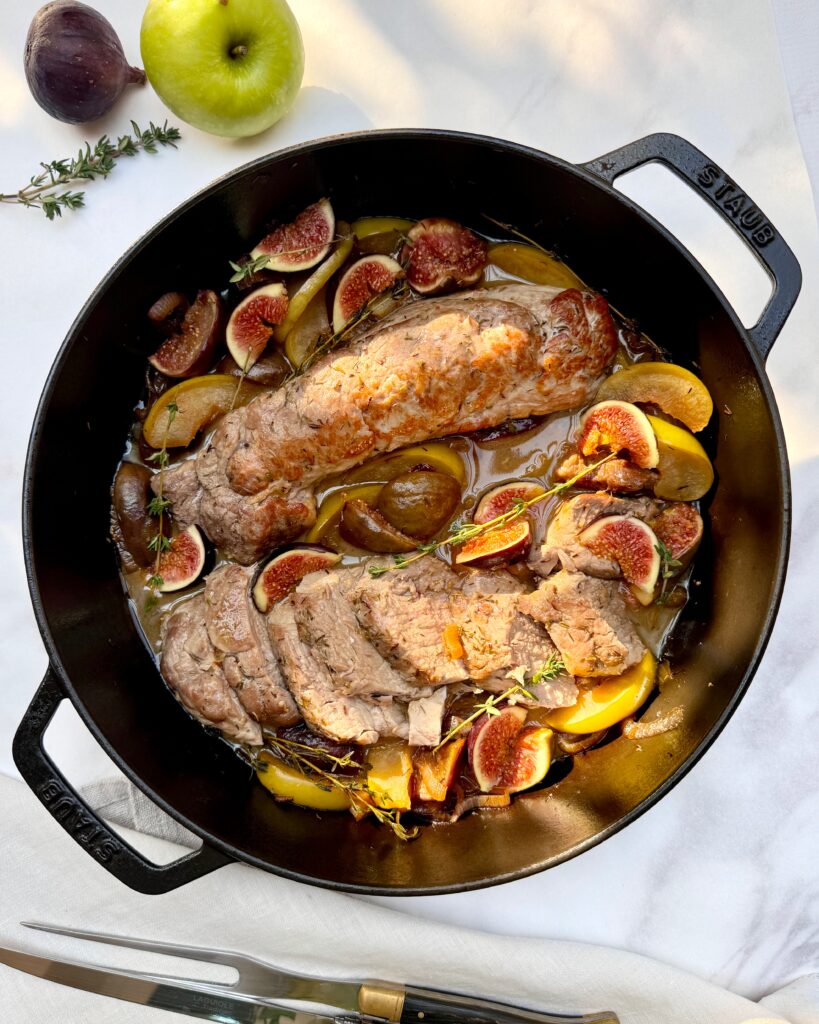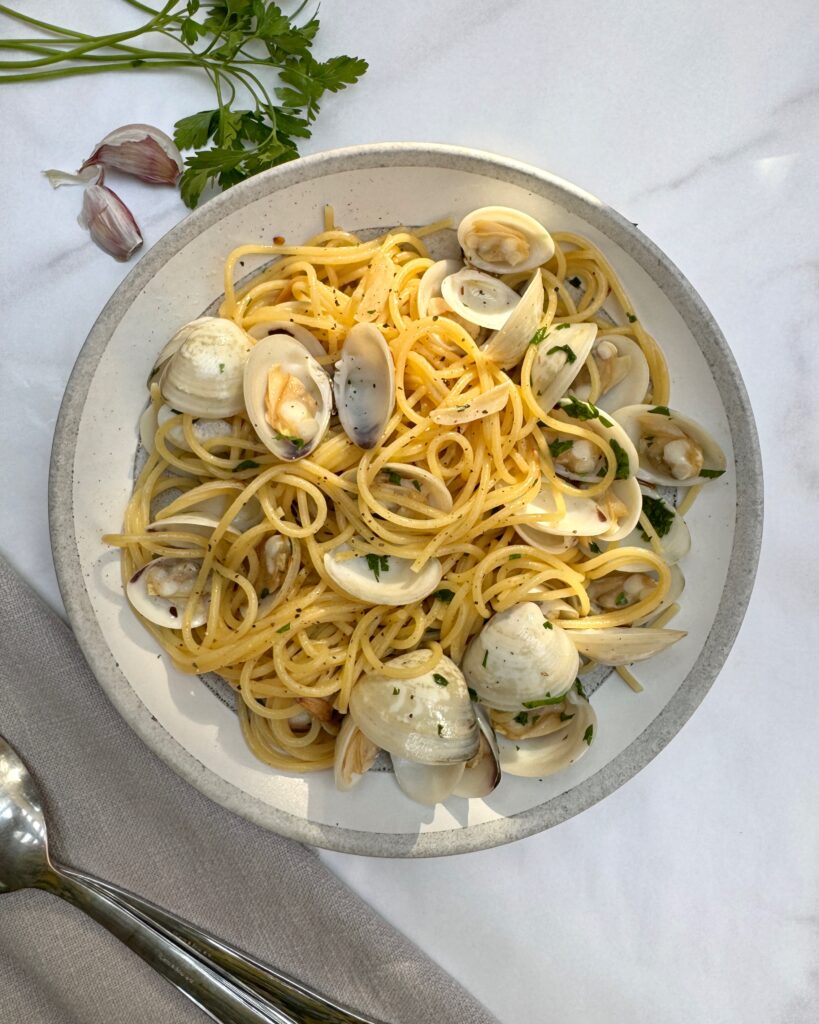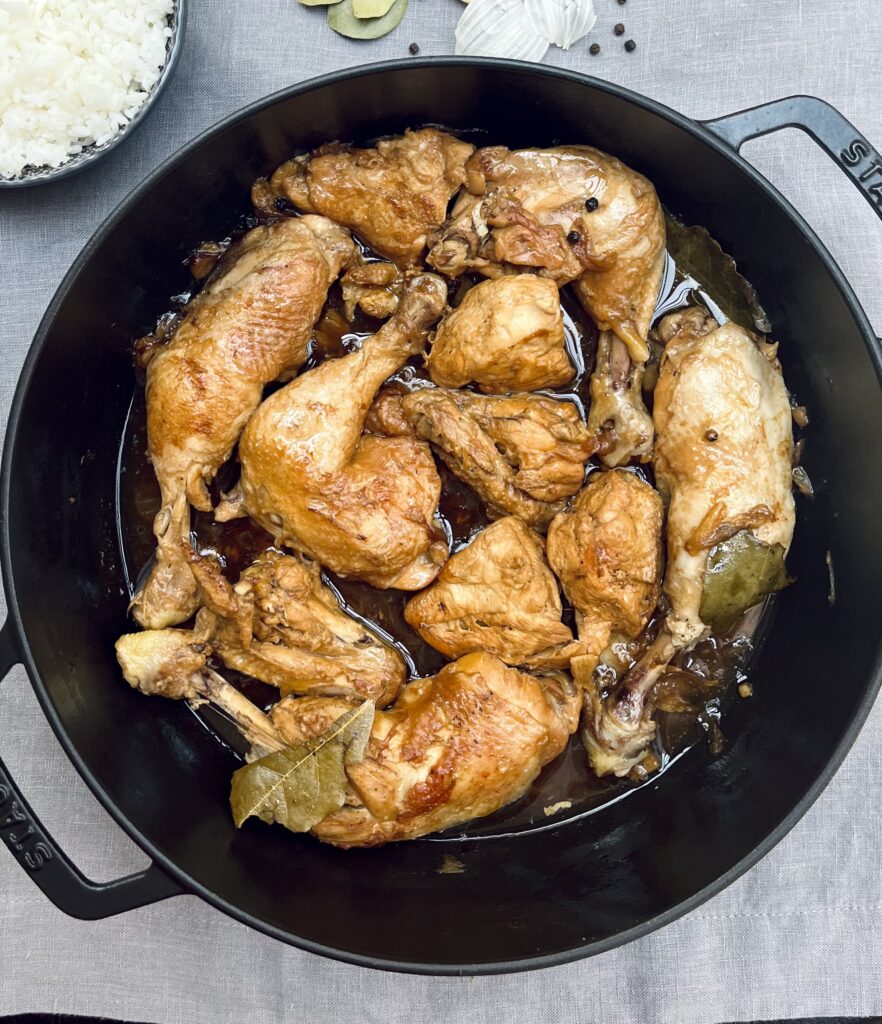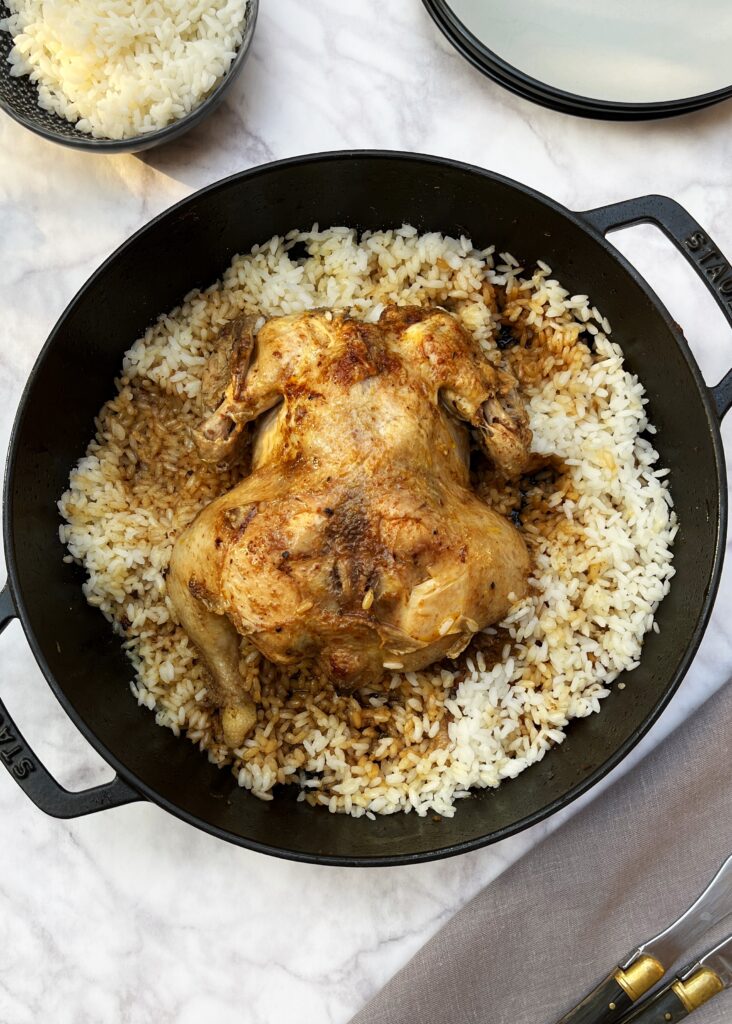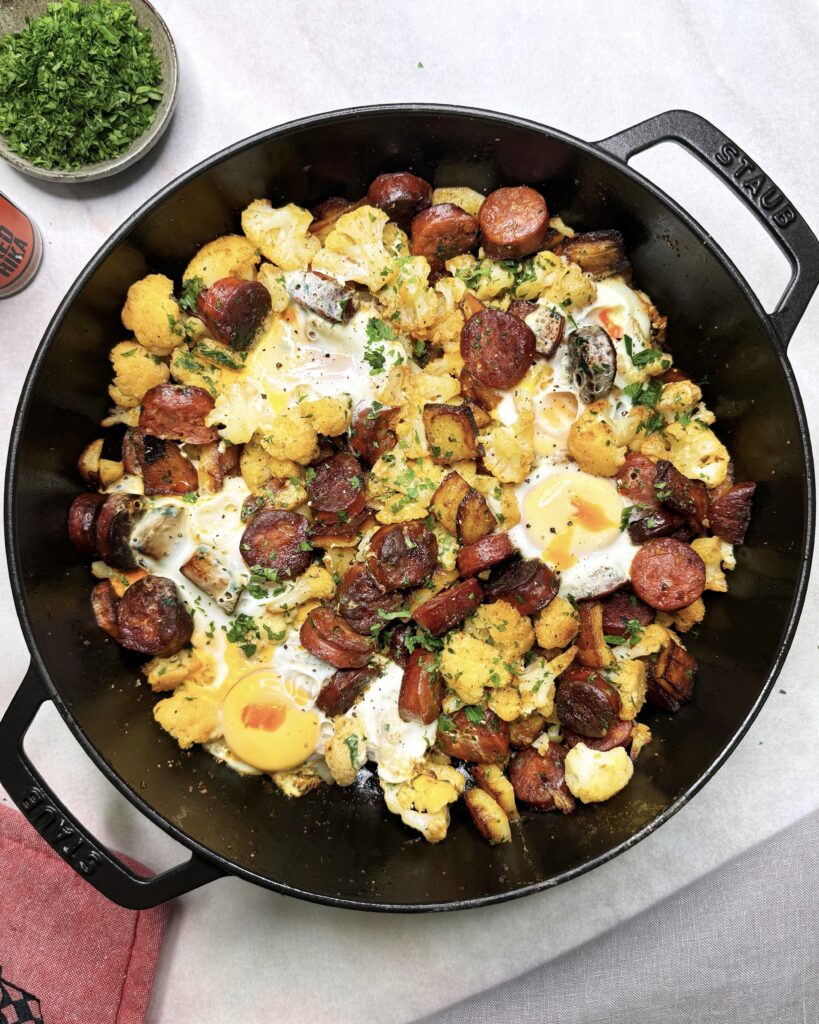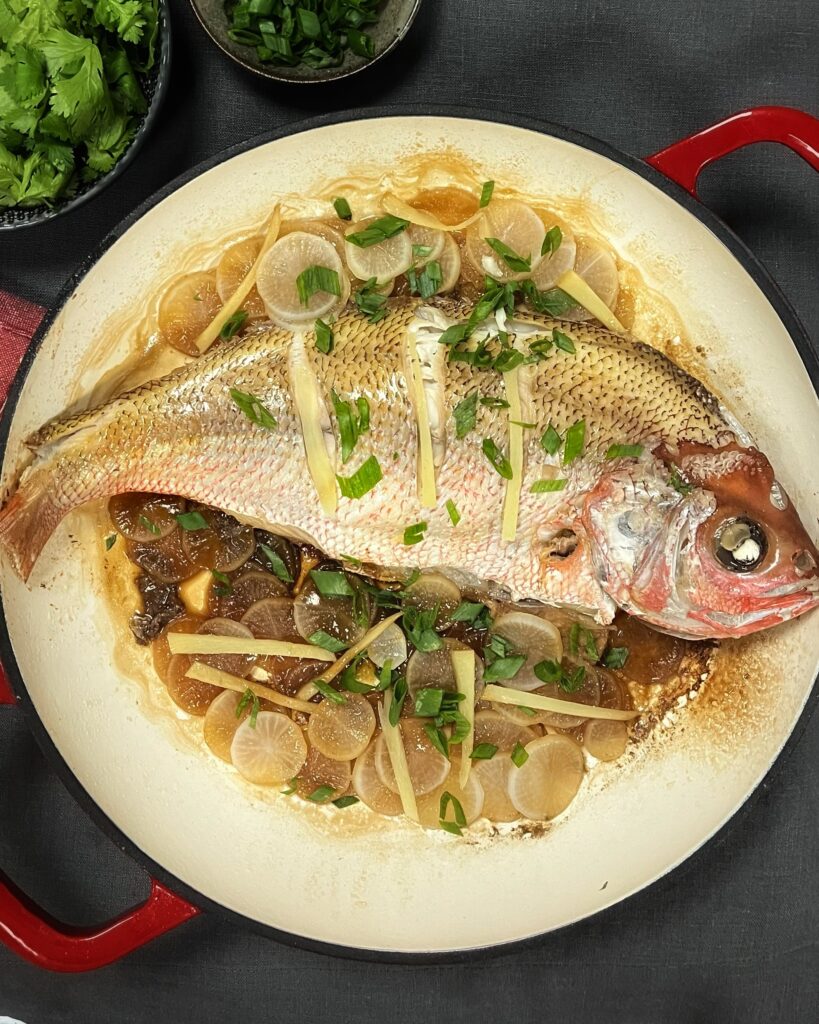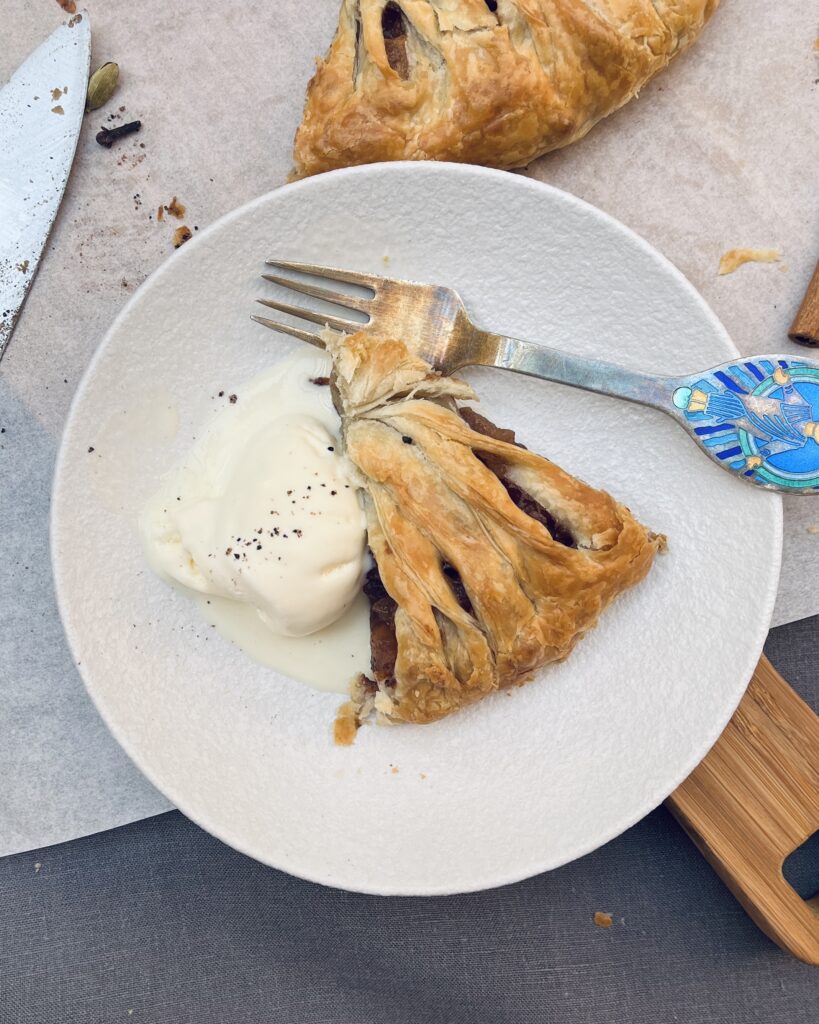
This quick 25-minutes recipe produces one of the best things you can have in your fridge: Thai yellow curry paste. Flavour-packed and with a heavenly aroma, it allows you to whip up delicious Thai coconut curries at home in a matter of minutes. It can easily stay in the fridge for months and is my go-to dinner solution when I am out of time or ideas!
Overview of the Ingredients:
The list is long, but this is an authentic recipe, and we are going all in! A classic yellow curry paste is made with a bunch of aromatics, a selection of ground spices, red chilies and shrimp paste. It may require a trip to a couple of supermarkets, but I promise you: it is totally worth it!
Aromatics include fresh roots and vegetables that create a fragrant base with a slightly pungent and a distinctive citrusy smell: ginger, garlic, onions, cilantro, galangal and lemongrass. The last two may need an introduction.
Galangal is a root that comes from the same family as ginger, but the similarities pretty much end there. Ginger is lemony, warm and pungent, with juicy flesh and darker skin that easily peels off. Paler and much denser galangal has a minty, penetrating freshness with floral notes and is reminiscent of green cardamom. Because of the different flavour profiles, the two are not interchangeable.
Lemongrass is a tropical herb with a long stalk, bulbous base and thin leaves. It has a bright, zesty taste without the acidity of lemon. Whole stalk is quite fibrous and is usually added to soups or stocks and discarded in the end. For curries, stir fries or salads, the rougher outer layer is removed to extract tender inner part from the base.
Ground spices include turmeric powder, cumin and coriander. Bittersweet and earthy, they add a savory element to the paste, and turmeric is responsible for the vibrant color.
Red chilies bring in the essence of Thai cuisine: heat. Dried chilies are soaked in hot water and added to the paste together with it, which also helps to achieve a smoother consistency. Regulate the heat by increasing or reducing the quantity of chilies.
And last but not least…
Shrimp paste is an indispensable ingredient in South East Asian cooking. Basically, it is fermented ground shrimp mixed with salt. It has a very strong smell which may seem unpleasant at first but fades out quickly. A little shrimp paste goes a long way and enriches the dishes with deep flavours of umami. Authentic yellow curry paste is not the same without it, so please try to get it! If you cannot (either get it or appreciate it ;)), consider one of the following: fish sauce, anchovy or miso paste or (as a last resort) Worcestershire sauce.
Preparation tips for Yellow Curry Paste:
- In some versions, ginger and garlic go through a kind of thermal treatment first. They are wrapped into foil and placed into the oven for about 15 minutes. This allows to release some of their deeper flavours – garlic’s savory sweetness and ginger’s warm pungency. Let them cool for a few minutes, squeeze out the garlic cloves and peel the ginger root. Slice it into thin circles – it makes it easier for the blender.
- Galangal is quite dense and hard to peel. Try using a knife instead to scratch off the skin. Likewise with ginger, slice into circles.
- To prep the lemongrass, lightly bruise the bulbous base and extract the inner part. You will need two stalks with about 5cm long base each. If you cannot find it fresh, you can get a jar of minced lemongrass instead.
- Soak chilies for 10-15 minutes and reserve the water. Use 5 whole chilies for a milder kick, 10 for medium and 15 for very hot.
- Place all the ingredients into a blender and blitz to a smooth paste:
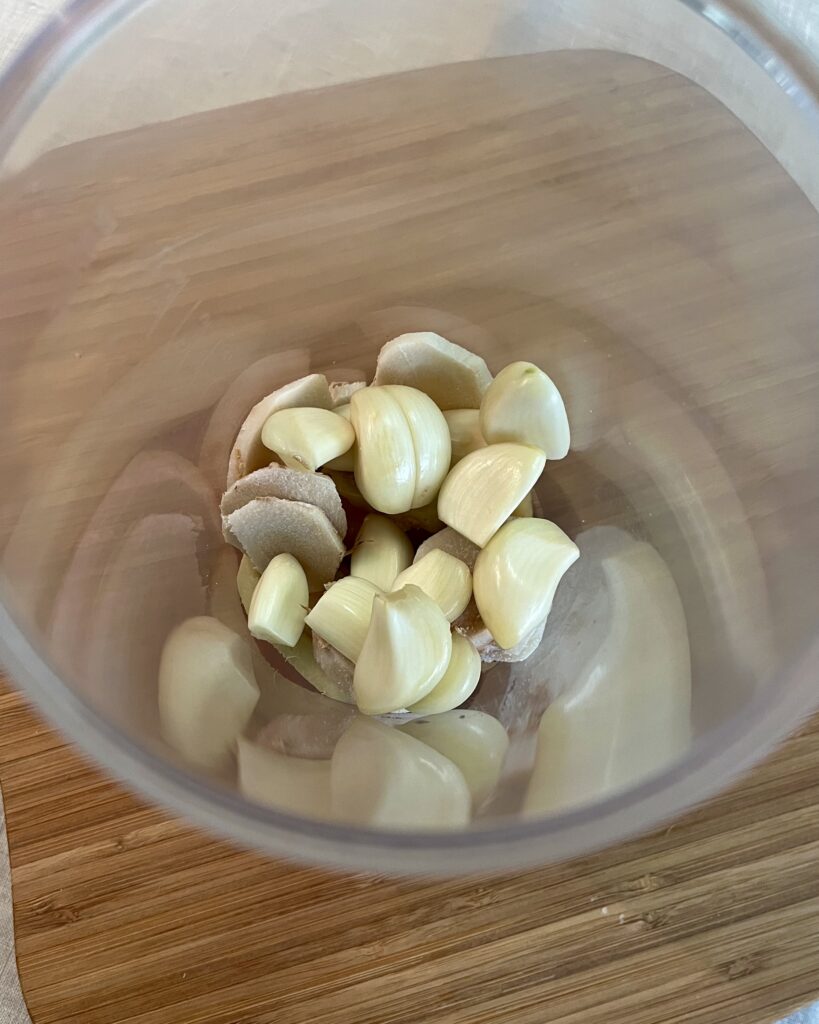
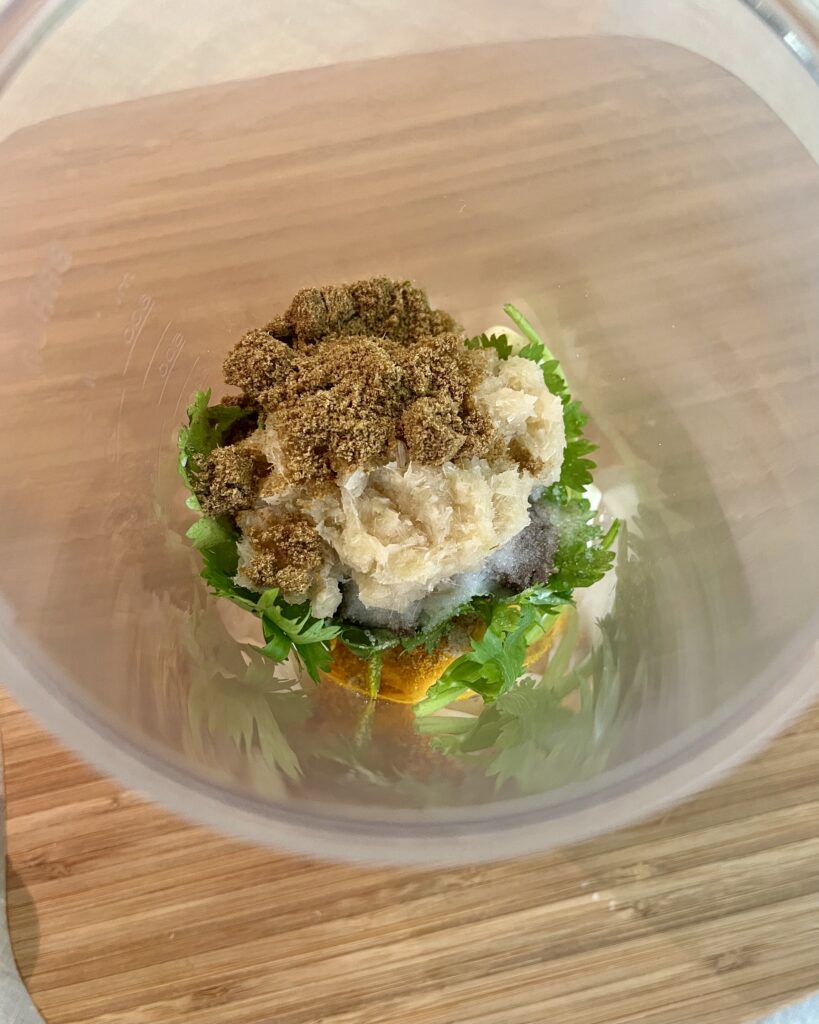

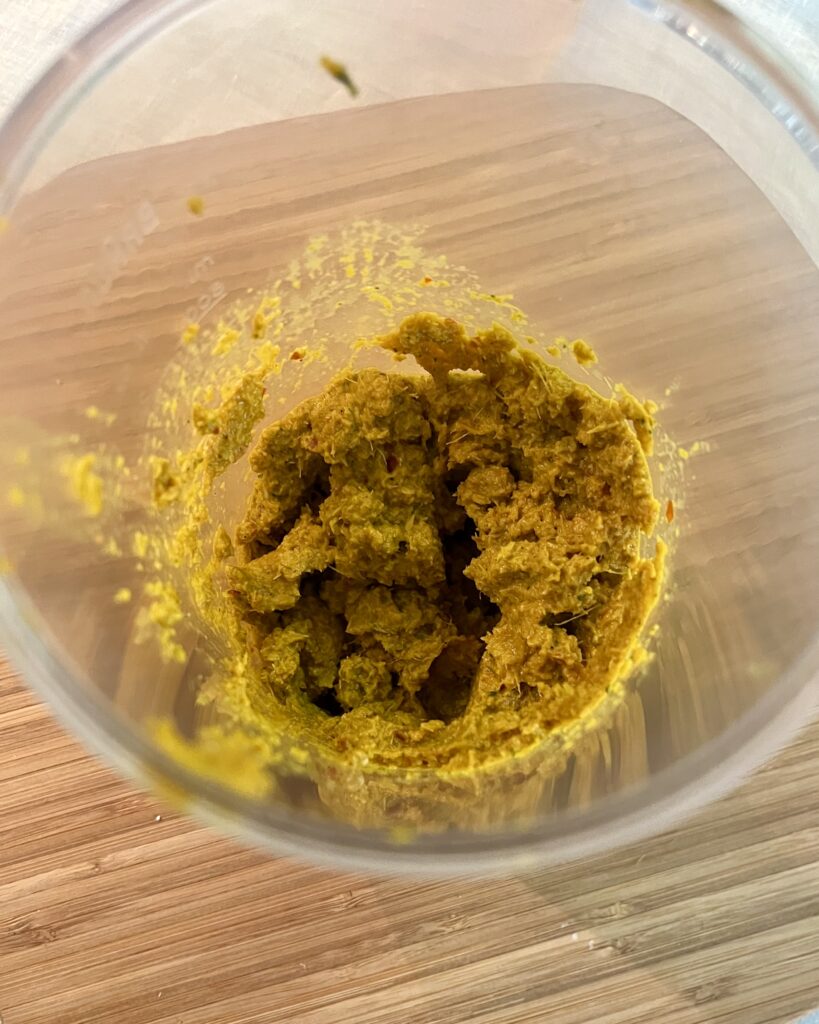
- Use a little water from the chilies for thinning. The consistency should be thick yet a little bouncy.
- Pack the ready paste into an airtight container and keep in the fridge. It can last there for a few months.
How to use Yellow Curry Paste:
This paste is the basic ingredient in coconut curries. Heat 2 tbsp of oil in a pan or casserole, add 1 tbsp of curry paste and fry for about 40-60 seconds until fragrant. Pour in a can of coconut milk or cream and stir to incorporate all the smaller bits of the paste. Add 1 tsp of fish sauce and 1 tsp of brown sugar and stir again. Done! Now you can pop in protein like chicken, prawns or fish together with vegetables such as onions, broccoli, carrots, cherry tomatoes… Or maybe go for the irresistibly creamy potato and spinach curry. The principle is the same: make the sauce first, then cook the main ingredient(s). Fish and seafood take very little time while chicken (especially lean parts like breast) takes a bit longer.
Yellow curry paste really is a fun and rewarding project. It is quick, yields enough paste to take care of at least 10 dinners and you get an aromatherapy session as a bonus!
***
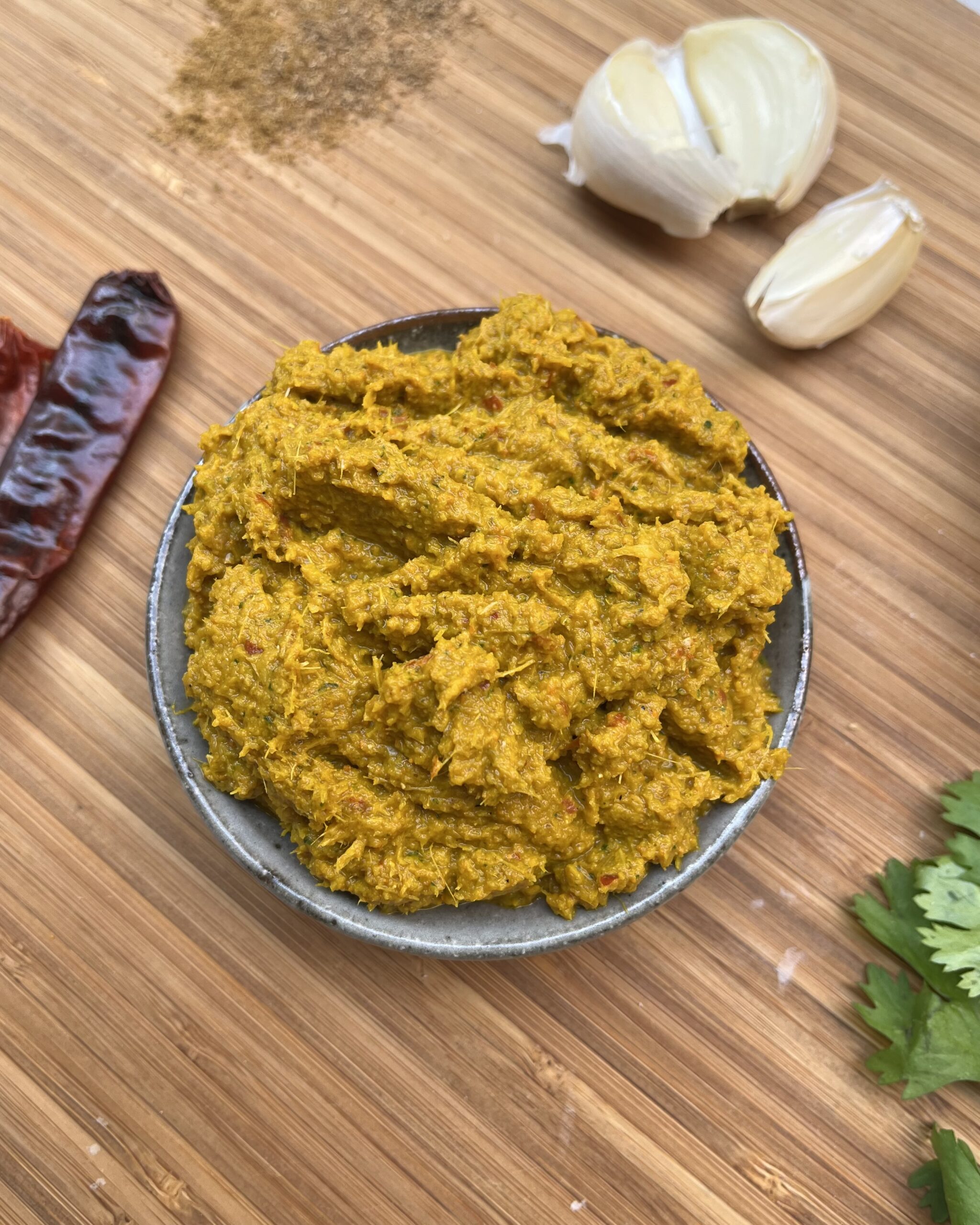
Yellow Curry Paste (Authentic and Homemade)
Equipment
- 1 blender
Ingredients
- 3- inch piece of ginger
- 3- inch piece of galangal
- 1 head of garlic
- 2 shallots
- 2 stalks lemongrass or 1 tbsp minced
- 1 tbsp shrimp paste please don’t skip!
- 1 tsp ground turmeric
- 1 tsp ground cumin
- 2 tsp ground coriander
- 1 tsp salt
- 1 tbsp fresh coriander leaves plus a couple stalks
- 5 dried red chilies see notes
Instructions
- Soak chilies in hot water.
- Wrap the garlic bulb and ginger root into foil and send into oven for 15 minutes at 200C. Let cool.
- Peel and slice ginger and squeeze the garlic cloves out.
- Scratch the skin of galangal off with a sharp knife.
- If using fresh lemongrass, remove the outer layer and extract the tender inner part from the base.
- Place all ingredients into a blender, including ground spices.
- Blend until smooth with one tbsp soaking water from the chilies.
- Put into an airtight container and refrigerate for up to 4 months.
- To use, simply sauté 1 tbsp of paste in olive oil until fragrant, then pour in 400ml coconut cream, 1 tsp fish sauce and 1 tsp brown sugar before adding your chosen protein or veggies.
Notes
- 5 whole red chilies are good for a milder kick. For more heat, increase the quantities.




